Get ready to have your mind blown—some pencil artists make drawings so realistic, you’ll squint twice to check if they’re actual photos! From Kohei Ohmori transforming boring screws into glittering masterpieces, to J.D. Hilberry’s portraits full of raw emotion, each piece tells a powerful story. Silvie Mahdal’s hair looks like it could breeze off the page, and Diego Fazio’s “Sensazioni” almost breathes on its own. Want to discover even more jaw-dropping, pencil-powered magic?
Key Takeaways
- Artists like J.D. Hilberry, Kelvin Okafor, and Arinze Stanley create hyperrealistic portraits that evoke striking emotions and storytelling.
- CJ Hendry and Kohei Ohmori transform everyday objects into lifelike masterpieces, showcasing pencil’s surprising power to mimic reality.
- Detailed wildlife and nature scenes by Armin Mersmann and Stefan Marcu capture intricate textures of trees, bark, fur, and feathers with photorealistic precision.
- Surreal and innovative hyperrealism by Jono Dry and Diego Fazio blends lifelike detail with mind-bending or emotional concepts.
- Detailed studies of eyes and facial features, as seen in Veri Apriyatno and Franco Clun’s work, create deep emotional impact and viewer connection.
Kohei Ohmori: Everyday Objects Transformed
Metal might sound boring, but in the hands of Kohei Ohmori, it’s anything but plain. This Japanese artist has a wild talent for creating realistic pencil drawings that make you question if you’re looking at a photo or a sketch.
Seriously, he can turn an everyday screw or even an Asahi beer can into something jaw-dropping. His picture of a Casio G-Shock watch is packed with detail—like, *mind-blowingly* precise.
He transforms simple objects like screws or a beer can into jaw-droppingly detailed works—his G-Shock watch drawing is insanely precise.
Ohmori pours hours into every shadow and shimmer, showing every tiny scratch to make things ultra-real. He uses shading so well, it almost feels like you could grab the objects off the page.
Through pure skill and a pencil, Ohmori brings boring stuff to life, spotlighting beauty in every bit of metal.
Silvie Mahdal: The Art of Realistic Hair

Silvie Mahdal makes drawing hair look like magic, but it’s really about patience and some seriously cool tricks with a pencil.
She layers strokes to capture each strand’s texture, always paying attention to how light and movement bring hair to life—no bad hair days here!
Watching her work, you start to get why mastering hair is a true test for any pencil artist.
Mastering Hair Texture
After spending over 2,500 hours drawing during the 2020 lockdown, one artist really stood out when it comes to drawing realistic hair—Silvie Mahdal. Her dedication to realistic drawing is almost legendary! She zoomed in on every detail, capturing the wild, tangled, or soft strands of hair, and made you wonder if the portrait might just blink. Silvie’s process is all about extreme patience, using her pencils with super-precise shading, teasing out each wavy line and gentle highlight. She encourages others not to panic—everyone gets a few “bad hair days” when learning. Silvie’s YouTube videos break down each step, making even those frustrating flyaway hairs seem possible to conquer. Her work shows how texture turns a drawing into something unforgettable.
| Challenge Faced | Emotional Response |
|---|---|
| Struggling with detail | Frustration |
| Achieving lifelike hair | Pure excitement |
| Endless practice | Hope and motivation |
Pencil Layering Techniques
When it comes to drawing hair so lifelike you almost want to reach out and touch it, pencil layering techniques are the artist’s secret weapon.
Silvie Mahdal, who spent an incredible 2,500 hours with pencils during the 2020 lockdown, knows this better than most. Her technique starts with a simple pencil sketch, where she maps out the strands of hair with light, feathery lines.
Then things get interesting—she builds up multiple layers using different pencil grades, slowly moving from soft grays to rich, bold blacks. This careful layering gives the hair texture and depth, making it look surprisingly real.
Mahdal’s dedication to detail and her rhythmic process, often shared on video, show exactly how patience can turn a blank page into breathtakingly realistic hair.
Capturing Light and Flow
There’s something almost magical about seeing pencil-drawn hair that seems to glow and move across the page. Silvie Mahdal uses her graphite pencil like a magic wand, working tirelessly—over 2,500 hours during lockdown—to capture that tricky light and glorious flow in every lock of hair she draws.
Seriously, her hair looks so real, you might want to reach out and brush it off the page! She shares her secrets online, showing just how she builds textures, plays with rhythm, and gets those strands to almost dance.
Here’s how she nails it with a graphite pencil:
- Uses multiple shading techniques for shine and depth.
- Focuses on contrasting glossy and matte hair finishes.
- Practices continuously in her sketchbook, always pushing for more lifelike results.
Veri Apriyatno: Witnesses Through the Eyes
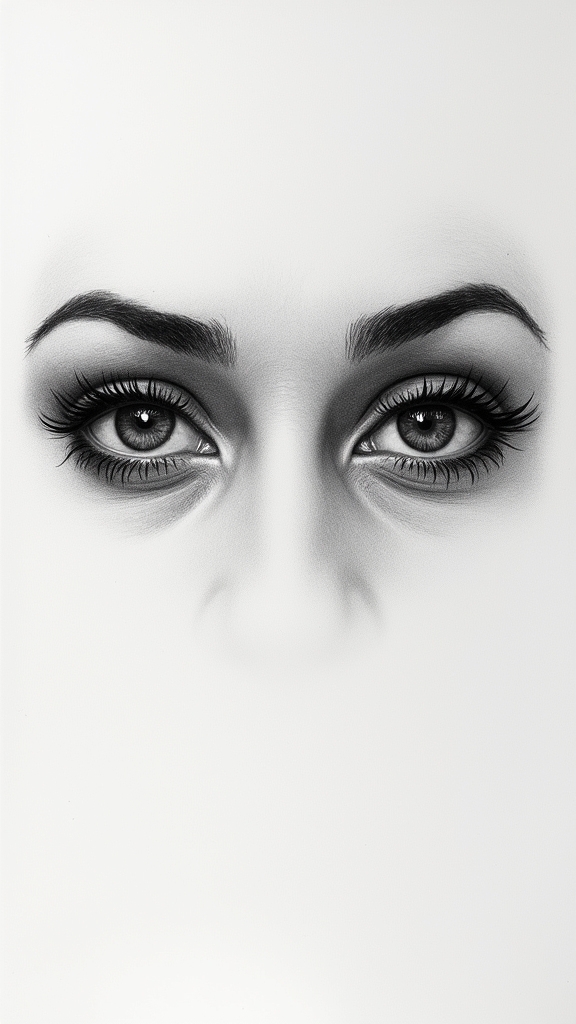
Eyes—some say they’re the windows to the soul, but in Veri Apriyatno’s art, they’re more like high-def movie screens showing every secret feeling.
Just take one look at his “Witnesses” series—those eyes are wild! He zooms in on the fine details, capturing everything from the shimmer of a tear to the slight wrinkle in an eyelid.
Using pencil, acrylic, and charcoal, Apriyatno packs his drawings with incredible texture and depth. It’s as if each eyeball is telling you its own personal story, complete with all the drama.
The contrast between glossy highlights and matte shadows makes his eyes look almost real—pretty intense stuff. Through hyperrealism, he invites everyone to look closer and connect with the feelings behind every gaze.
J.D. Hilberry: Emotion and Illusion
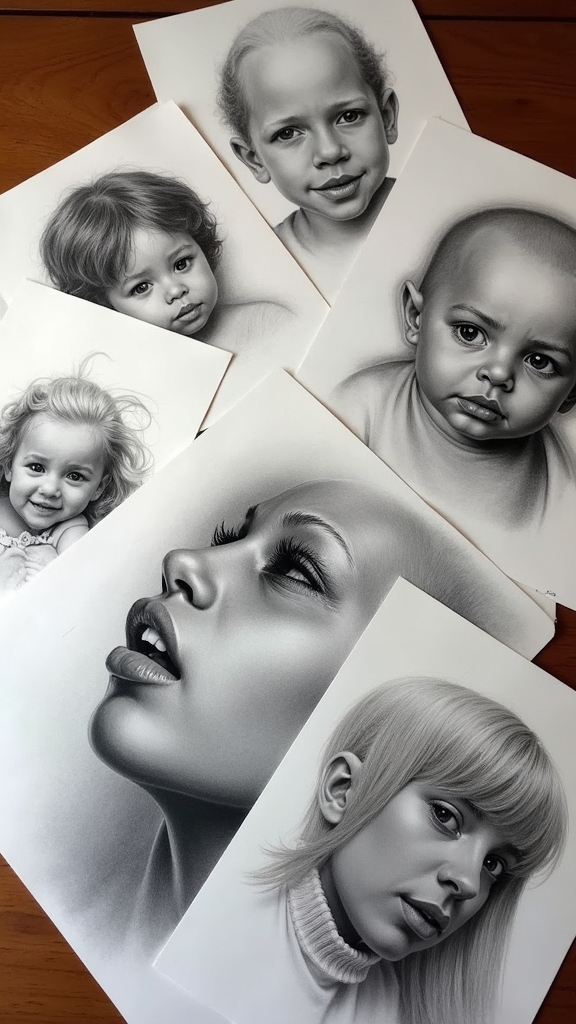
J.D. Hilberry doesn’t just draw pictures—he brings emotions to life using pencils and some mind-blowing hyperrealistic tricks.
His artwork goes way beyond just looking real; it feels like you could reach out and touch the feelings he’s trying to show, whether it’s struggle, hope, or a bit of rebellion against doubters.
Get ready to see how Hilberry uses shadows, textures, and a whole lot of skill to tell stories that stick with you—even after you’ve stopped staring in amazement.
Hyperrealistic Techniques Explained
Some drawings seem so real, it’s almost spooky—but that’s just how hyperrealism works in the hands of an artist like J.D. Using clever hyperrealistic techniques, Hilberry creates pencil art that almost jumps off the page.
Every detail matters. His self-portraits don’t just capture faces; they show paper that looks torn and taped together, as if the drawing itself has its own story to tell.
If you look closely at his work, you’ll notice:
- Meticulous shading to make things look 3D,
- Texture tricks that fool the eye into thinking you could touch the drawing and feel bumps or rips,
- Layered pencil strokes to build shadows and highlights.
Hilberry proves pencils aren’t just for doodling—they’re for blowing minds!
Conveying Deep Emotional Narratives
Even though pencil drawings might seem quiet or simple at first, they can hold huge emotions just waiting to burst out—especially in the hands of an artist like Hilberry. His work pulls you in, especially when you look at those finely drawn facial features.
There’s so much story packed into a single glance: hope, pain, maybe a fierce bit of stubbornness. Hilberry’s self-portrait, for example, practically shouts resilience. He often shows faces and hands that seem torn and then patched back together, kind of like someone’s been through a lot but refuses to fall apart.
The shading and texture add layers of emotion. Hilberry’s art doesn’t just trick your eye—it also tugs at your heart, making you feel every moment behind those drawings.
Kelvin Okafor: Capturing Serene Portraits
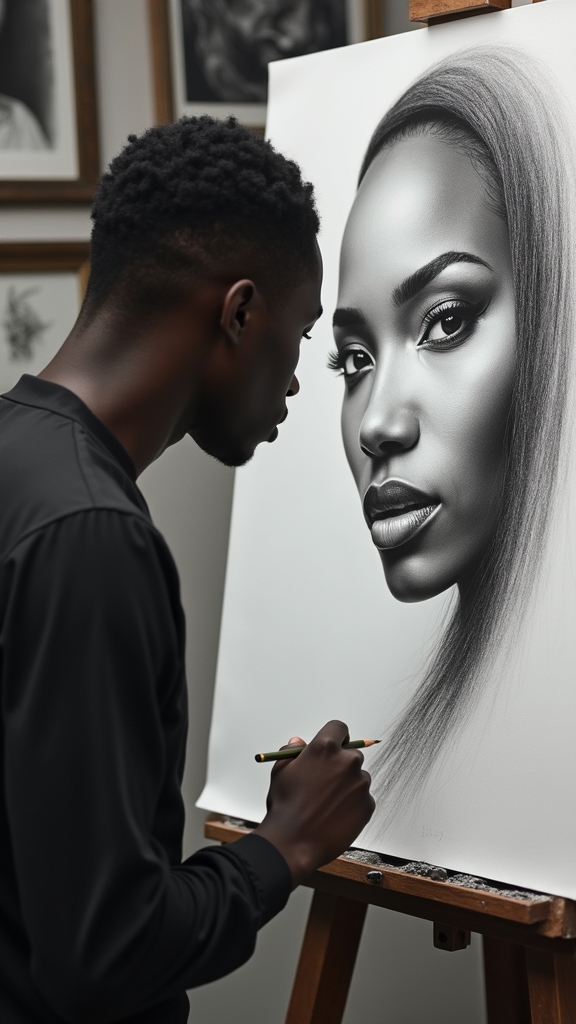
Magic happens when Kelvin Okafor picks up his pencil. His black and white portraits almost seem to breathe, capturing moments of pure calm that hook viewers right away.
Okafor’s “Interlude” series is like a silent movie told through faces—each drawing tells a quiet, powerful story. He stares at every line and shadow, patiently adding tiny details until his subjects look ready to step right out of the page.
Here’s what makes Kelvin’s pencil magic stand out:
- He carefully layers shading for soft, lifelike textures.
- Every facial detail is reassembled to pull viewers into the moment.
- The emotional connection is strong—you feel what his subjects feel.
In Okafor’s hands, pencil portraits become windows to serene, black and white worlds.
CJ Hendry: Color and Texture in Graphite
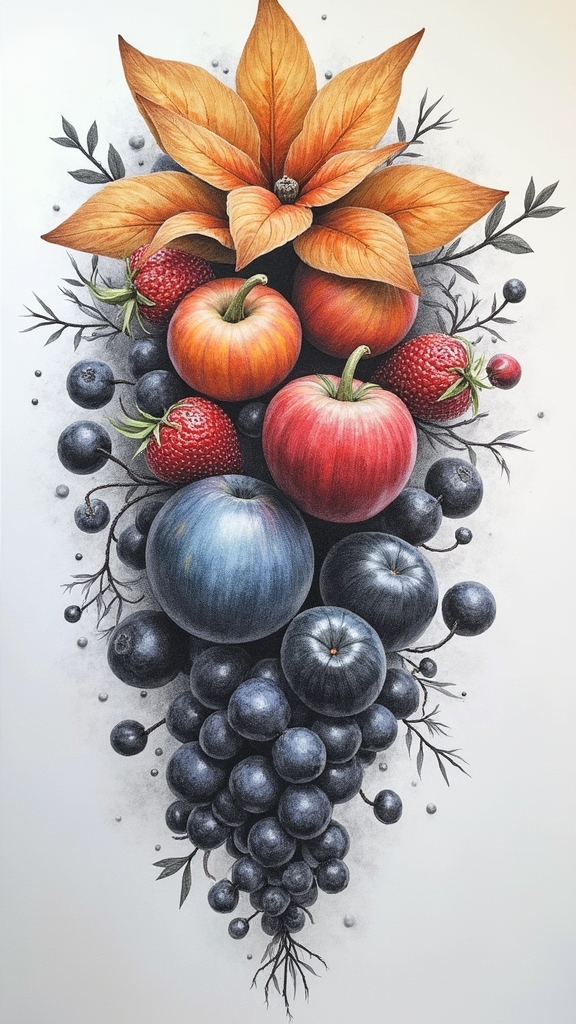
While most people think pencils are just for sketches in the margin of a notebook, CJ Hendry treats them like magic wands—turning ordinary graphite into mind-blowing art.
She’s famous for taking basic art supplies and making them look like they could jump off the page. Hendry started with black and white, but when she teamed up with Christian Louboutin, she brought color into her world in a big way.
In her “Complementary Colours” series, she used twelve different pencil colors to create art that looks so real, people sometimes mistake it for oil paintings.
Her art isn’t just about looks—she finds inspiration in pop culture, making everything feel familiar but also surprising.
Hendry’s work proves that, with the right art supplies, a pencil can create true magic.
Arinze Stanley: Expressive Hyperreal Portraits
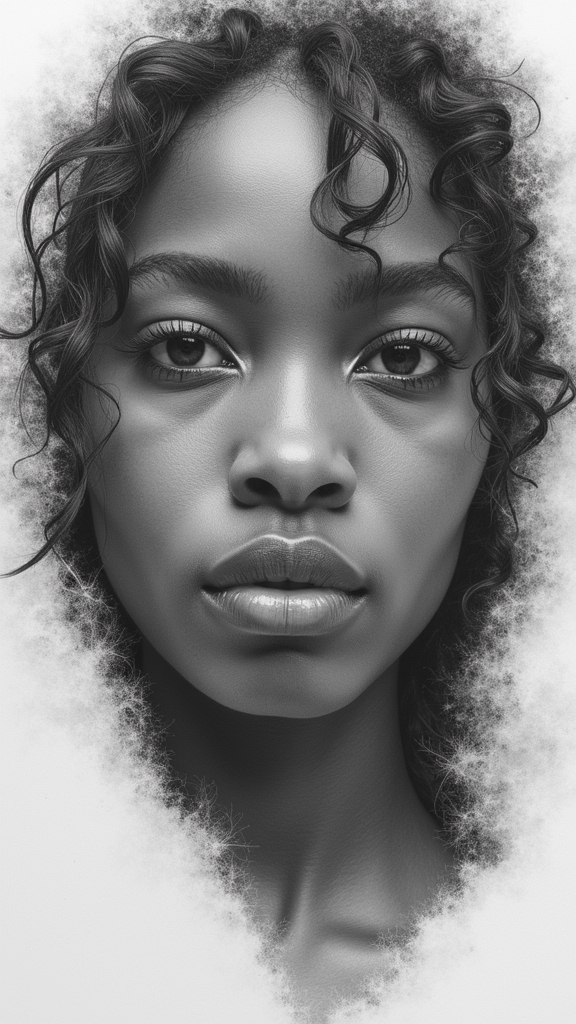
Arinze Stanley’s portraits are so real and full of emotion, it feels like the people in them could blink at any moment—or maybe even cry.
He’s known for squeezing jaw-dropping detail into every pencil stroke, especially when it comes to the eyes, making you stop and stare back.
All that realism doesn’t come easy though; his art takes loads of patience and careful work, but the end result is totally worth it for anyone who loves seeing feelings jump right off the page.
Emotional Depth in Portraits
Emotion—that’s the secret sauce behind those portraits that stop you in your tracks.
Arinze Stanley, a Nigerian artist, knows how to create depth, drawing out feelings with every pencil stroke. His hyperrealistic portraits go way beyond just looking real—they reach into your heart, especially through the eyes.
If you’ve ever seen his “Witnesses” series, you’ll know what it means to see someone’s soul reflected in pencil.
Let’s break down how Stanley achieves such moving emotional depth:
- He pays extra attention to eyes and facial expressions to create depth.
- He mixes pencil, acrylic, and charcoal to add texture and boost impact.
- Through practice and patience, he fine-tunes every shade, making emotions practically leap off the page.
Realism Through Fine Details
Getting swept up in the emotion of a portrait is one thing—but what really makes you question if you’re staring at a photograph or a drawing? For Arinze Stanley, the answer is all about fine detail.
His hyperrealistic pencil portraits aren’t just impressive—they’re mind-blowing in how closely they mimic real life. Look closely at his drawings and you’ll find tiny, delicate lines in the skin, beautiful textures in curly hair, and reflections in the eyes that seem to glimmer with real light.
Every glossy highlight or matte shadow is carefully put in to make the person on paper look fully alive. Stanley’s commitment to capturing fine detail isn’t just skill—it’s what lets each artwork tell its powerful, unforgettable story.
Patience and Artistic Process
There’s a quiet kind of magic that happens when someone sits down with nothing but a pencil, a blank sheet of paper, and a mountain of patience.
Arinze Stanley knows this magic well. Since he was six years old, he’s been shaping his skills, always pushing himself to new heights in hyperrealistic portrait drawing. His secret weapon? Loads of patience and, of course, shapes using careful, light-handed strokes. Those portraits don’t come alive by rushing!
Take a look at his process:
- Carefully mapping out the basic shapes using a pencil—no shortcuts here!
- Working slowly to capture every tiny detail in human expressions.
- Spending hours, sometimes days, to infuse each piece with emotion and life.
It’s hard work, but completely worth it.
Jono Dry: Surrealism Meets Photorealism
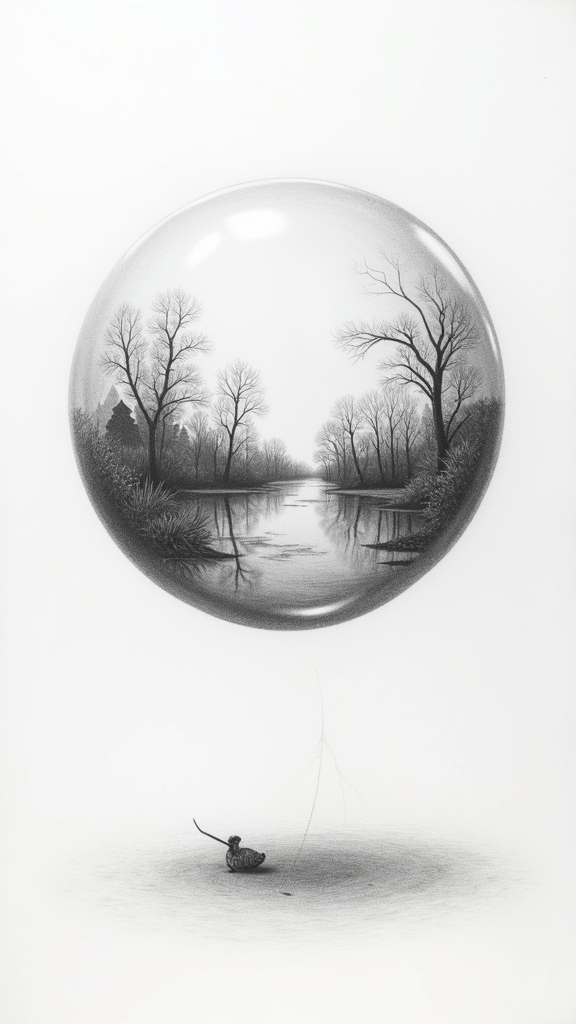
While most pencil drawings look pretty realistic or stick to your typical portraits, Jono Dry’s art feels like it comes from a dream—and maybe even a slightly weird one. Imagine taking photos, but then twisting them into something so surreal, you have to do a double take. Dry is a self-taught artist from South Africa, and his style is wild: photorealism meets surrealism, with shadows and textures that almost jump off the page. Working mostly on huge sheets of paper or board, he doesn’t just copy reality—he reinvents it.
Here’s how his art stands out:
| Style | Technique | Effect on Viewer |
|---|---|---|
| Photorealism | Intricate shading | Jaw-dropping details |
| Surrealism | Unusual subjects | Surprised reactions |
| Vintage photo | Large scale | Mind-bending impact |
Franco Clun: Lifelike Celebrity Portraits
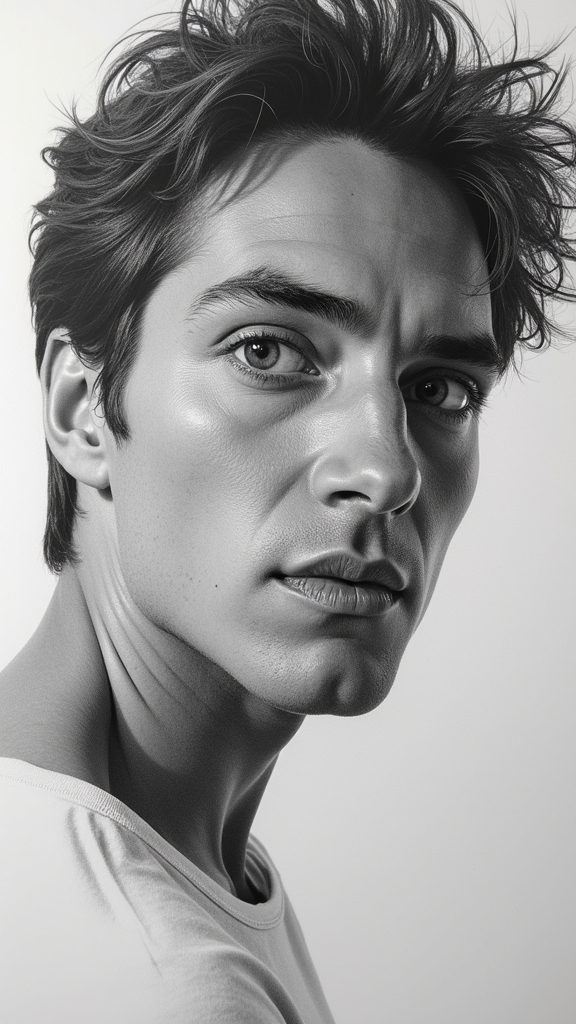
Every once in a while, an artist comes along who can use little more than a pencil and paper to totally blow people’s minds.
Franco Clun, a self-taught Italian artist, does exactly that with his insane lifelike celebrity portraits. It’s hard to believe these are just pencil drawings—they almost look like photos!
He didn’t go to fancy art schools; he learned everything himself by practicing nonstop and reading drawing manuals.
His secret? It’s all in his drawing techniques and his eye for detail.
For example, Clun is known for:
- Carefully capturing tiny details in facial features
- Creating realistic skin and hair textures
- Using shading to give portraits a striking level of depth
No wonder the art world is taking notice!
Paul Cadden: Complexity in Everyday Moments
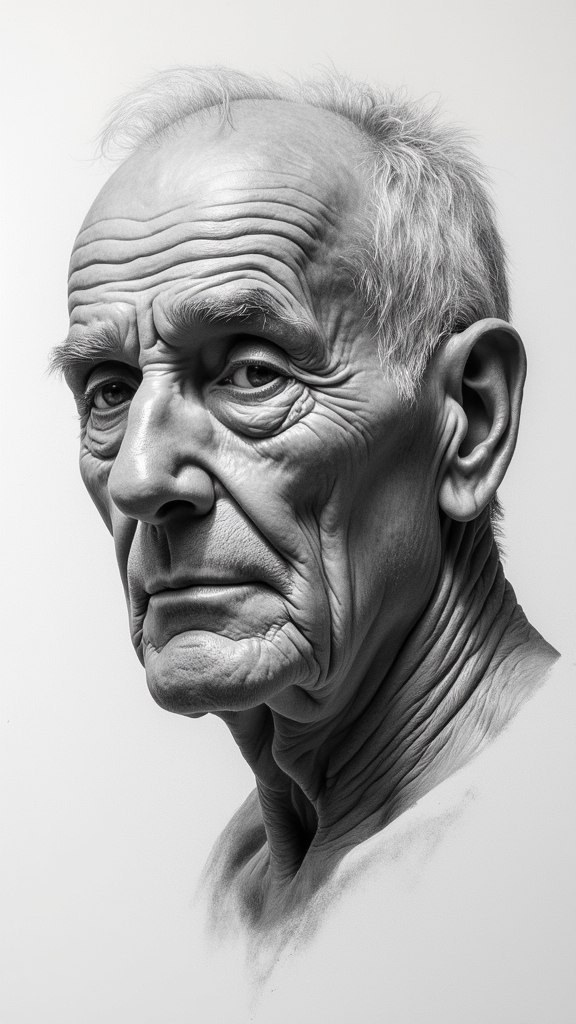
Magic happens when Paul Cadden picks up a pencil. With just graphite and chalk, this Scottish artist can turn the simplest daily scenes into drawings so real, you might want to reach out and touch them.
Paul doesn’t just draw faces or objects—he really knows how to choose a subject that looks ordinary, like someone waiting at a bus stop, and make it fascinating. His secret? Incredible attention to detail and texture.
Cadden’s drawings usually start with photographs or even video stills, but his hand brings a softness and depth that cameras just can’t capture. The end result is wild—every sketch seems to breathe.
Each subject feels alive, transformed into a complex story told without a single spoken word.
Cath Riley: Large-Scale Flesh Realism
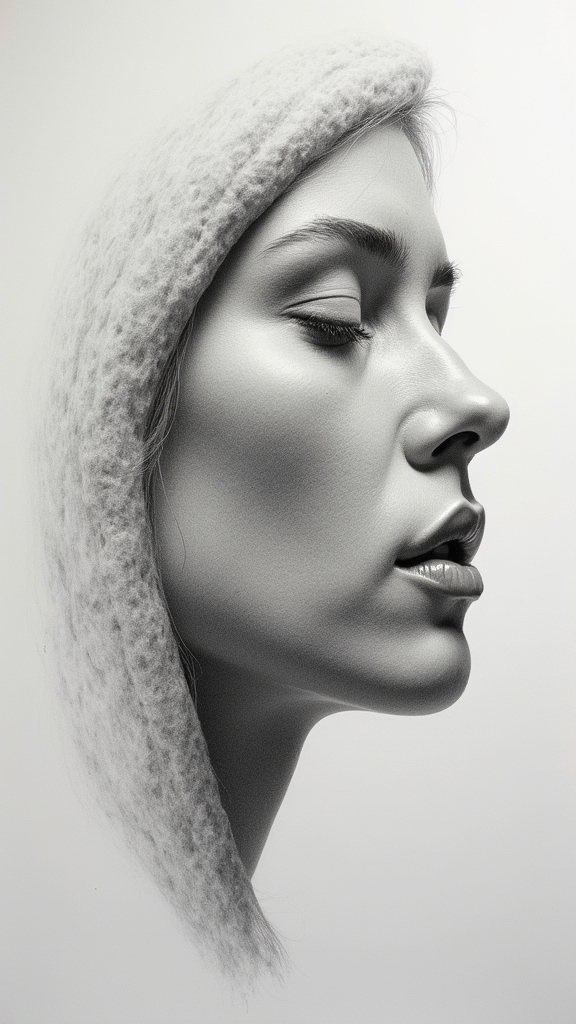
Cath Riley’s giant pencil drawings look so real, you might feel like you could reach out and touch the skin she’s drawn—just hope it doesn’t start talking back!
She zooms in super close on things like wrinkles, pores, and even tiny hairs, turning these everyday details into a wild adventure for your eyes.
With her careful shading and awesome attention to texture, Cath’s work makes the simple surface of skin seem epic and surprisingly emotional at the same time.
Intricate Skin Texture Studies
Textures can totally mess with your head, especially when you realize just how complicated something like human skin really is.
Cath Riley’s work takes this mind-bending complexity to a whole new level with her intricate skin texture studies. She doesn’t just draw a simple face—she zooms in, revealing the unique style of every wrinkle, pore, and shadow in large-scale pencil art.
Riley’s massive drawings are seriously impressive, showing off every detail that most people would miss with the naked eye. Here’s what sets her art apart:
- She layers pencil marks to build up depth, making the skin look super real.
- Imperfections aren’t hidden—they’re celebrated, adding emotion.
- Riley masterfully plays with light and shadow to make the skin pop!
Monumental Hyperrealistic Drawings
Even if you think you’ve seen realistic pencil drawings before, prepare to have your mind totally blown.
Cath Riley’s monumental hyperrealistic drawings are based around the human body—zoomed in so close, you might feel like you need to step back. She takes simple pencils but uses them in ridiculously clever ways, mixing different types to create textures that almost make you want to reach out and touch the paper.
Riley’s planning is intense; each drawing is mapped out with care, making every wrinkle and shadow count. Her giant pieces suck you right into the scene, making your heart race as you get lost in the incredible detail.
It’s like these drawings live and breathe, turning regular pencil art into a whole new world.
Armin Mersmann: Intricate Tree Drawings
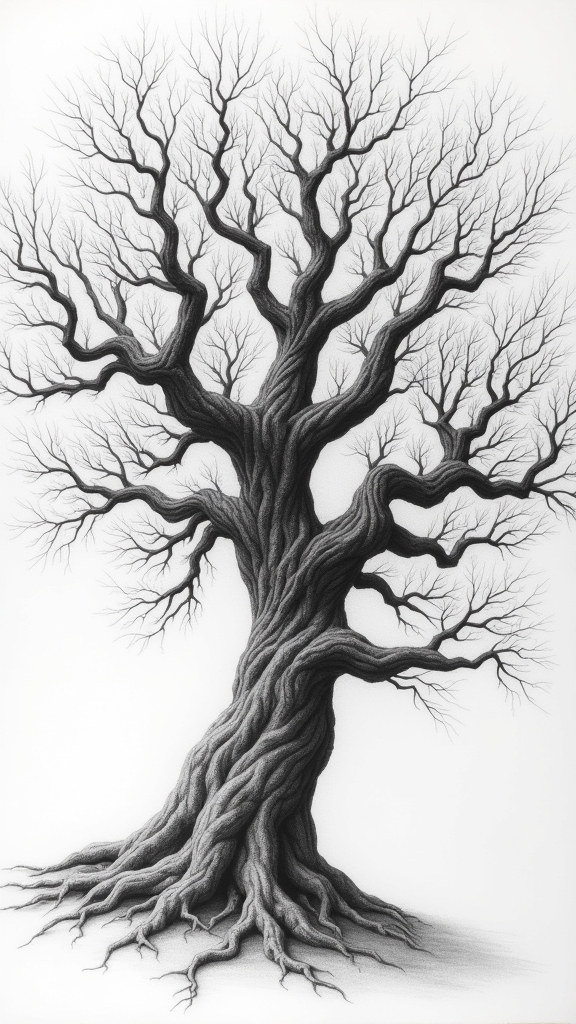
Imagine staring at a pencil drawing so detailed you’d almost expect the leaves to rustle if you blew on it—that’s the magic of Armin Mersmann and his incredible tree drawings.
His artwork isn’t just sketches of branches and trunks; it’s a masterclass in how to gradually build jaw-dropping details using nothing but graphite.
A masterclass in turning simple graphite into astonishingly intricate, lifelike trees—far beyond ordinary sketches of branches and trunks.
Mersmann’s tree drawings stand out because:
- He perfectly captures the complicated texture of bark and the wild patterns of leaves.
- He uses tons of different shading tricks, making his trees look real enough to touch.
- Each branch and leaf is carefully drawn to make people feel connected to nature.
Seriously, looking at his work, you might find yourself wondering if squirrels jump out of his sketchbooks!
Diego Fazio: Sensazioni’s Flowing Forms
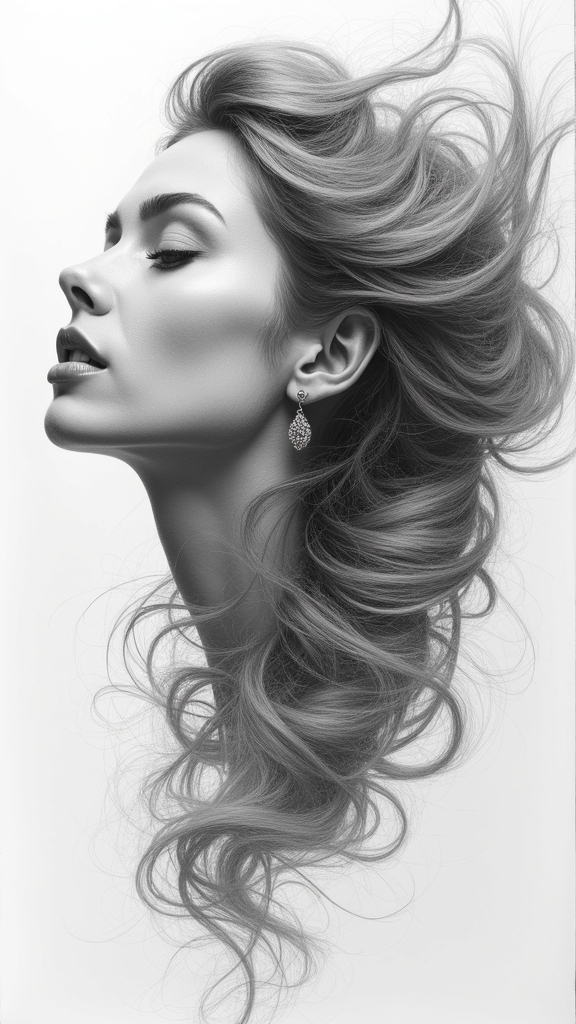
While Armin Mersmann makes you feel like you could reach out and touch the bark of every tree, Diego Fazio takes pencil realism in a whole new direction.
Fazio’s “Sensazioni” series looks so real, it’s almost eerie—like you’re staring at a black-and-white photo, not a drawing. He spends a long time on each piece, layering pencil grades to get flowing forms, incredible depth, and lifelike textures.
His work doesn’t just copy real life—it feels alive, almost like it could breathe if you looked away. He captures the emotions and the fluid movements of his subjects with such intensity, viewers can’t help but pause in awe.
It’s no wonder Diego Fazio inspires so many artists to push themselves even further.
Stefan Marcu: Dynamic Wildlife Renderings

Here’s what makes Marcu’s work stand out:
What sets Marcu’s art apart: his dynamic pencil work brings wildlife scenes to life with stunning detail and motion.
- He mixes many pencil types to get crazy realistic textures for fur, feathers, and backgrounds.
- Each drawing captures action, so viewers feel like they’re right in the wild.
- His dedication to practicing every day helps his art keep getting better, inspiring others who love pencils and nature.
Wildlife has never looked so alive!
Giacomo Burattini: Apnoea’s Striking Realism
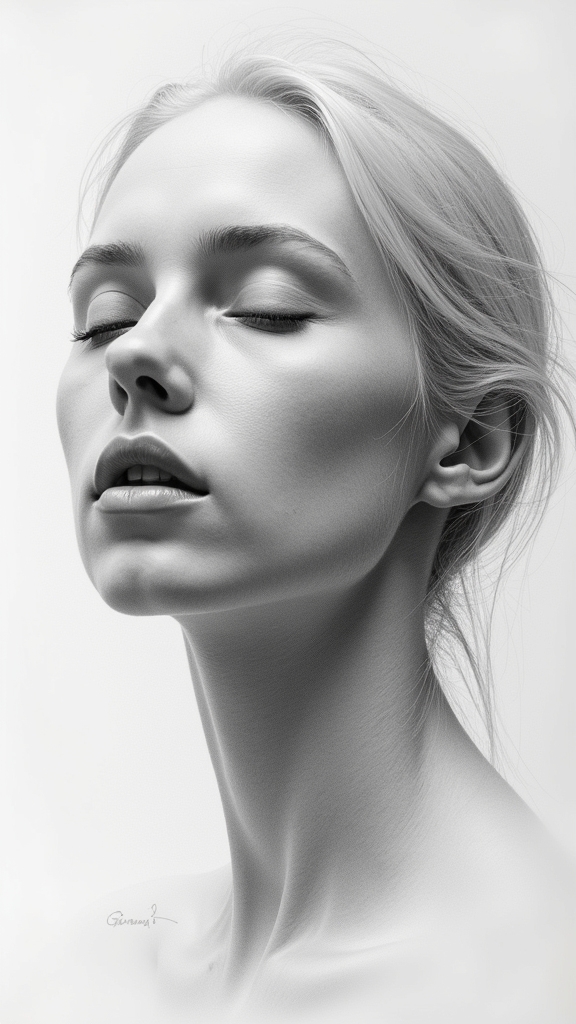
Hyperrealism takes center stage in Giacomo Burattini’s series “Apnoea.” Each drawing in this collection looks so real, it’s actually a little bit wild—pencil marks become living, breathing textures.
Burattini uses reference photos to capture even the tiniest details, like a stray hair or a wrinkle, and turns them into jaw-dropping art. His shading is next level, creating bold contrasts that almost make you want to reach out and touch the paper.
But it’s not just about looking real—these drawings make you feel something deep. The theme of breath and life pulses through the series, almost making viewers hold their own breath.
That’s probably why “Apnoea” is so memorable in the hyperrealism world—it’s just packed with feeling.
Frequently Asked Questions
Who Is the Most Realistic Pencil Artist?
Determining the most realistic pencil artist is subjective, as mastery of art techniques varies among renowned artists like Kohei Ohmori, Kelvin Okafor, J.D. Hilberry, Silvie Mahdal, and Paul Cadden, each excelling in hyperrealism through distinct approaches.
What Can an 11 Year Old Draw?
When considering what an 11-year-old can draw, subjects such as animals, simple scenery, or favorite cartoon characters often provide creative inspiration. Exploring varied themes supports skill development and encourages artistic growth through imaginative and observational drawing experiences.
What Can I Draw in 5 Minutes?
When considering what to draw in five minutes, one may attempt quick sketches of simple subjects like a coffee cup, flower, or hand. Emphasizing basic shapes and minimal shading allows for efficient practice and creativity.
What Is the Most Realistic Drawing in the World?
The most realistic drawing in the world is typically associated with pencil works created using advanced hyperrealistic techniques. Artists achieve unmatched lifelike accuracy through meticulous shading, precise proportions, and an extraordinary attention to detail, often requiring thousands of dedicated hours.
Conclusion
After seeing these jaw-dropping pencil drawings, it’s hard not to feel like your stick figures need some serious practice! Each artist has their own wild style, turning ordinary pencils into tools of pure magic. Whether it’s lifelike hair, sparkling eyes, or mind-blowing wildlife, there’s no doubt—pencil art can do pretty much anything. So next time you pick up a pencil, remember, you’re holding more than just a drawing tool. You’re holding the key to making art that amazes.

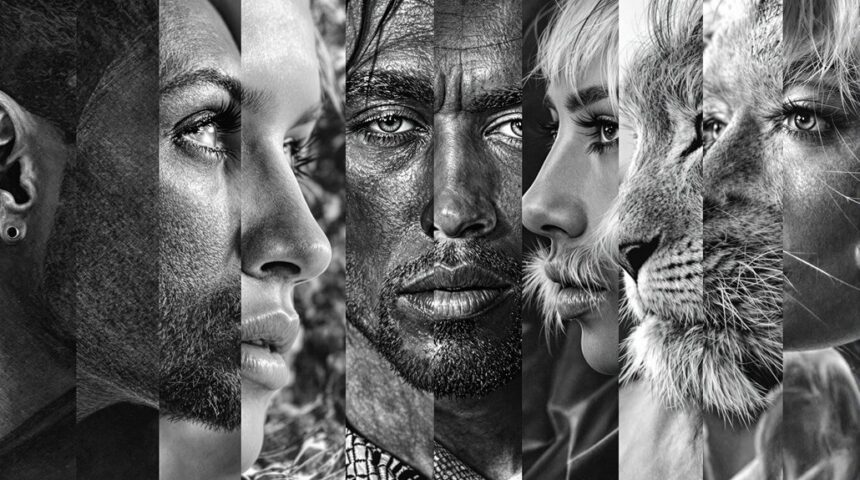
Leave a Reply